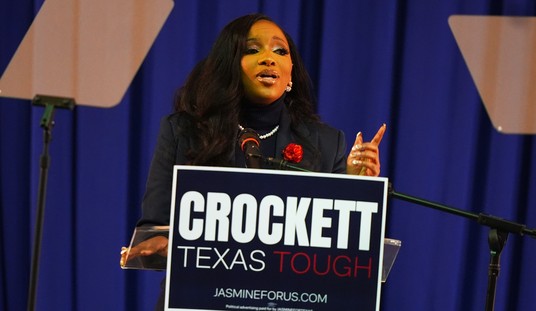Educators who worry about the persistent achievement gap between white and minority youngsters ought to pay more attention to a disastrous development hidden in plain sight: the terrible (and rapidly growing) over-use of entertainment media by children of color.
Focused efforts by parents, community groups, teachers and the students themselves to limit their immersion in electronic diversions might bring more immediate improvements in educational outcomes than expensive and bureaucratic schemes to restructure schools.
A powerfully disturbing new report by the Kaiser Family Foundation shows that black and Hispanic kids consume 4-1/2 more hours of media every day than their white counterparts—investing a startling total of more than 90 hours a week on television, video games, social networking and other distractions. “It’s clear that, overall, American youth spend an enormous amount of time with media, but minorities spend most of their waking hours with media,” says study director Ellen Wartella, head of the Center on Media and Human Development at Northwestern University.
The chief culprit is television, of course: black youngsters spend more than 41 hours a week watching the tube, while white kids devote less than 25 hours per week.
This contrast connects directly with the disparity in academic performance: while the Kaiser study “cannot establish a cause and effect relationship between media use and grades,” it reports a dramatic correlation between heavy indulgence in electronic entertainment and poor performance in school. Whether over-indulgence in media leads to lousy grades, or kids who get lousy grades seek solace by over-indulging in media, the association emerges as undeniable.
Among “heavy media users” (defined as the 21 percent of all young people who consume more than 16 hours a day) nearly half (47 percent) report fair or poor grades (C’s or lower). Among “light media users” (the 17 percent of youngsters investing three hours a day or less) only 23 percent receive those disappointing grades. These conclusions echo the results of scores of studies going back more than 30 years that relate heavy television viewing to weaker grades and lower achievement scores in school.
Recommended
The researchers offer no easy explanation for the higher levels of media consumption by minority kids. “Children may turn to media if they feel their neighborhoods lack safe places to play or if their parents have especially demanding jobs that prevent engagement,” offered Frederick Zimmerman, chair of health services at the UCLA School of Public Health. With 70 percent of black children born to unmarried parents, casual observers might jump to the conclusion that higher levels of TV viewing might relate to the stressed and unstructured environments often associated with fatherless households. The Kaiser report declares, however, “that differences by race/ethnicity remain—even after controlling for other factors such as age, parents’ education, and single vs. two parent homes.”
Moreover, the racial disparity in media consumption has exploded in the past five years: the gap between white and black TV-watching was two hours and 12 minutes a day in 2004, but doubled to four hours and 23 minutes today. African-American and Hispanic children are also substantially more likely to have a TV in their bedrooms, to eat meals in front of the tube, and to live in households where they report “the TV is left on most of the time even when no one is watching.”
There’s both bad news and good news associated with this research.
The most depressing aspect of the new study involves the appalling waste of life and opportunities currently afflicting some of society’s most vulnerable young people: with black and Hispanic kids spending 30 hours less every week than white kids in homework, exercise, reading, developing social skills and family interaction.
The good news concerns the chance to make a major difference without a huge governmental initiative or some other top-down effort at reform. If parents, churches and communal organizations concentrated on relatively minor changes in black and Hispanic homes—removing TV from children’s bedrooms, turning off the tube during meal-time, placing firm limits on hours devoted to electronic diversions—the results could change lives.
Michelle Obama has drawn worldwide attention (and considerable praise) for her energetic campaign to curb childhood obesity, which particularly harms minority kids. Some right-wing commentators have mocked her efforts but they’re wrong to do so. The high-profile attempt to combat poor eating habits and lack of exercise represents precisely the sort of do-it-yourself reform that conservatives ought to applaud, relying on altering mindsets and behaviors rather than building costly new bureaucratic empires.
The same basic approach, drawing support from across the political spectrum, should take square aim at the media consumption gap. The figures show that children of every ethnicity squander so much time on empty electronic amusements that they qualify as media addicts, but in minority communities the level of addiction looks especially damaging.
Racism receives (appropriate) blame for countless ills in our society, but no one can argue that ongoing discrimination against children of color somehow causes their over-use of entertainment media. Making a change in viewing habits in minority homes shouldn’t require overcoming centuries of bigotry, or reaching into the hearts of the white-Anglo majority; it only requires reaching for the off-switch on the remote control.
Reducing wasted hours on TV, gaming, and other distractions provides a powerful opportunity for self-help and empowerment. Kids can’t control the skills or dedication of their teachers and parents can’t determine the quality of curricula, but the generations can certainly work together to impact the way time is invested—or squandered—when kids come home from school.
This column appeared originally in THE DAILY BEAST on June 13, 2011.

























Join the conversation as a VIP Member